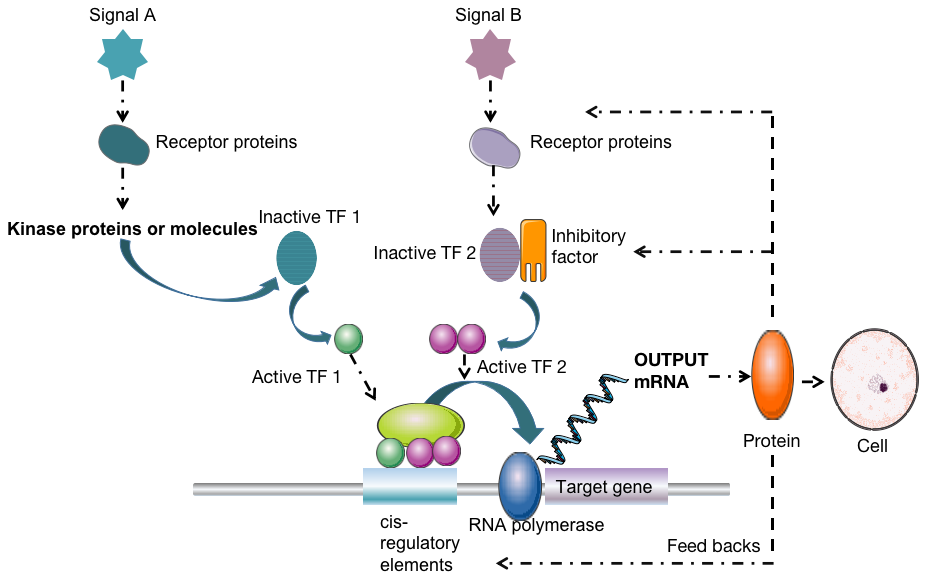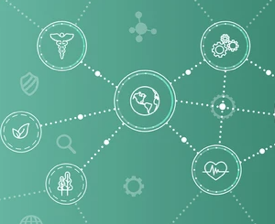Gene Regulation
With many years of data analysis experience, CD Genomics provides you with various types of gene regulation analysis services, including gene expression regulation at the transcription level, post-transcription level and translation level, such as transcription factor, DNA methylation and other types of protein post-translational modification analysis at the transcription level, and non-coding RNA regulation at the post-transcriptional level, aiming to help you study the regulations at various factors at gene expression levels.
The regulations at gene expression is an important research content in the post-genomic era. Gene expression regulation includes regulations at transcription level, post-transcriptional level and translation level. The regulations at transcription level refers to changing the level of gene expression by changing the rate of transcription, which plays an important role in the accuracy and diversity of the transmission of genetic information. The transcriptional regulations at eukaryotes includes many forms, such as DNA methylation, histone modification, chromatin remodeling, transcription factors and so on. Eukaryotic gene transcription is carried out in the nucleus, while translation is carried out in the cytoplasm. Therefore, post-transcriptional regulation is another important aspect of gene expression regulation, which mainly includes RNA alternative splicing, RNA methylation, and a variety of regulatory RNA (miRNA), LncRNA, circRNA) involved in post-transcriptional regulation. In eukaryotes, gene regulation mainly occurs at the transcription level, but the synthesis of some proteins that are important for cell survival also occurs at the translation level. It mainly includes the stability of mRNA, the regulations at translation initiation, the role of initiation factors in translation-related factors, and the regulations at eukaryotic mRNA structure. With the increasing enrichment of genome sequence information, the continuous improvement of calculation methods and databases, the application of bioinformatics analysis will become increasingly widespread, and different types of gene regulation mechanisms will gradually be clarified.
The Biological Significance of Gene Regulation
In an organism, all cells carry the same genetic information and carry the same genes. However, the performance of a gene in different tissues and cells is not the same, which is determined by the gene regulation mechanism. The process of transferring genetic information from DNA to protein is called gene expression, and the regulations at this process is the regulations at gene expression. A cell produces only a small part of the protein at a specific moment, that is, only a small part of the gene in the genome is expressed. The gene regulation mechanism precisely controls the production quantity of each protein according to the functional requirements of each cell. The complete life process of an organism is the result of the various genes in the genome being switched on and off according to a certain temporal and spatial order. Therefore, all cells have a precise regulation mechanism for gene expression and protein synthesis.
Gene Regulatory Network
 Fig 1. Gene regulatory network.
Fig 1. Gene regulatory network.
Explore CD Genomics Gene Regulation Analysis Solutions
CD Genomics provides customers with different types of gene regulation analysis services based on customers' experiment data and data analysis requirements.
DNA Methylation Analysis: Methylation is a form of chemical modification of DNA and an important modification of proteins and nucleic acids. It can regulate the expression and shutdown of genes without changing the DNA sequence, and change the genetic performance.
LEARN MOREProtein Post-Translational Modifications: Protein post-translational modifications (PTMs) increase the functional diversity of proteins through the covalent addition of functional groups or proteins, the proteolytic cleavage of regulatory subunits, or the degradation of the entire protein.
LEARN MORETranscription Factor Binding Site Analysis: Different transcription factors respond to various stimuli from the external environment or various signals at different developmental stages, and bind to transcriptional regulatory elements to activate or inhibit gene transcription to control the expression of different genes.
LEARN MORENon-coding RNA Regulation Analysis: Non-coding RNA (ncRNA) is an RNA molecule that does not code for proteins transcribed from the genome. In addition to playing a role at the transcriptional and post-transcriptional level, non-coding RNA also plays an important role in the epigenetic regulations at gene expression.
LEARN MOREOur workflow
-
Upload different types of raw data
-
Develop an analysis plan
-
Gene regulation analysis
-
Generate charts
-
Report interpretation service
Biomedical-Bioinformatics, a division of CD Genomics, provides a one-stop gene regulation analysis service according to customers' requirements. In addition to the above analysis content, we also provide other data analysis related to gene regulation. If you have any other gene regulation data analysis needs, you can communicate with us, and we will meet your needs. If you have any questions about the data analysis content, turnaround time and price, please feel free to contact us. We have a professional technical support team to provide you with services, and look forward to working with you!
* For research use only. Not for use in clinical diagnosis or treatment of humans or animals.
Online Inquiry
Please submit a detailed description of your project. Our industry-leading scientists will review the information provided as soon as possible. You can also send emails directly to for inquiries.




